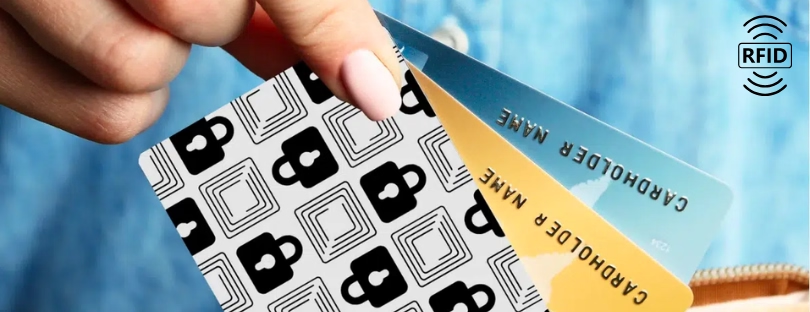
B2B Marketing Enters A New Digital Era: Stay Ahead Of The Curve
In the ever-evolving world of business-to-business (B2B) commerce, the marketing landscape has witnessed dramatic shifts, particularly in the digital arena. As technological advancements accelerate and buyer behaviours transform, there’s an urgent need for B2B marketers to innovate and stay ahead.
Let’s delve into the dynamics of this new digital era and how companies can navigate these changes to remain competitive.
The Age of Data-Driven Decisions
Stat: According to a Forrester study, 67% of B2B marketers believe that data-driven insights are pivotal to their marketing strategies.
The power of data analytics can’t be understated in this new digital age. Companies are harnessing the capabilities of advanced analytical tools to gain deeper insights into buyer behaviours, preferences, and pain points. This data-driven approach aids in crafting personalised campaigns, predicting market trends, and ensuring a more targeted marketing strategy.
Video Marketing Ascends
Stat: A HubSpot survey found that 54% of professionals want to see more video content from brands they support.
The allure of video marketing in the B2B sector has skyrocketed. Whether it’s product demonstrations, behind-the-scenes looks, or customer testimonials, video offers a dynamic way to convey a message and engage the audience.
AI and Automation: Enhancing Efficiency
Stat: From 2017 to 2022, AI adoption among organisations globally rose by 2.5x, and the average number of AI capabilities used by organisations has doubled.
The digital transformation powered by artificial intelligence (AI) and automation is evident in the rise in adoption rates and the expansion in AI capabilities utilised by businesses. As chatbots become a staple for customer interactions and predictive analytics refine sales strategies, the essence of efficiency and effectiveness in business operations has taken on a new meaning.
Additionally, the increased emphasis on natural-language text understanding signifies the evolution of AI in better comprehending and interacting with human users. The challenge ahead lies in harnessing the full potential of these technologies, ensuring diverse AI teams for optimal outcomes, and staying ahead in the rapidly evolving AI landscape.
Loyalty Programmes Take Centre Stage
Stat: Recent data surrounding customer allegiance indicates that a majority, approximately 54.7%, show fidelity to a range of 1 to 5 brands. In contrast, around 31.1% remain devoted to six or more brands. Interestingly, those enrolled in loyalty schemes typically contribute to an annual revenue growth of 12-18% more than those who aren’t. That relates to both B2B and B2C.
Previously more common in the B2C sector, loyalty programmes are now a significant B2B trend. By rewarding repeat customers and encouraging referrals, these programmes bolster customer retention and facilitate organic growth. All you have to do is visit websites like incentivesmart.com to see how loyalty programmes are expanding into all realms, particularly B2B, and, thus, growing the industry at a rate of knots.
Content Remains King
Stat: Data from the US Bureau of Labor and Statistics suggests a rise of 4% in the field from 2021 through to 2031. The content writing realm is set for a flourishing trajectory. Quality content has always been the backbone of effective B2B marketing. However, in the digital era, it’s not just about quantity but about relevance and timeliness. Interactive content formats like webinars, podcasts, and live demos have gained traction, offering value and building trust with prospects.
Seamless Omnichannel Experiences
Stat: Typically, businesses employing comprehensive omnichannel approaches to customer engagement see an impressive 89% retention rate. In contrast, those with less robust omnichannel tactics tend to hold onto only 33% of their clientele.
In the past, B2B interactions were limited to face-to-face meetings or phone calls. Today, buyers expect a seamless experience across various digital touchpoints. Whether it’s through a mobile app, website, social media, or even virtual reality – the transition between channels should be smooth, consistent, and integrated. Now, indeed, businesses that master omnichannel customer interactions typically keep about 89% of their customer base.
Additionally, three-quarters of B2B clients are more likely to repeat business with vendors who demonstrate strong omnichannel proficiencies.
Personalisation is Paramount
Stat: In B2B marketing, tailoring content can boost user engagement by up to 20%. Modern buyers expect tailored experiences. Tools that offer customised content, product recommendations, and targeted advertisements based on user behaviour and preferences are becoming standard in the B2B digital marketing toolkit.
The Rise of Virtual Events
Stat: The projected value of the virtual events sector is poised to hit approximately $366.5 billion come 2027. In a post-pandemic world, the importance of virtual events and webinars has surged. These platforms offer opportunities for networking, learning, and engagement without geographical constraints. A CWT study from 2022 projected that the expense for each participant at meetings and events had surged by 25% compared to 2019 figures.
That’s predicted to climb a further 7% by 2023. In the shadow of a possible economic downturn, enterprises will concentrate on identifying cost reductions and streamlining their event initiatives. Thus, although we have moved away from them and more towards hybrid events or even full in-person events, virtual events are beginning to boom again.
The digital era is redefining the paradigms of B2B marketing. With a blend of technology, creativity, and data, companies are equipped to deliver more impactful, efficient, and personalised campaigns. The key lies in continuous learning and adaptability. As the digital landscape shifts, B2B marketers must be agile, willing to experiment, and always ready to pivot their strategies to stay ahead of the curve.











